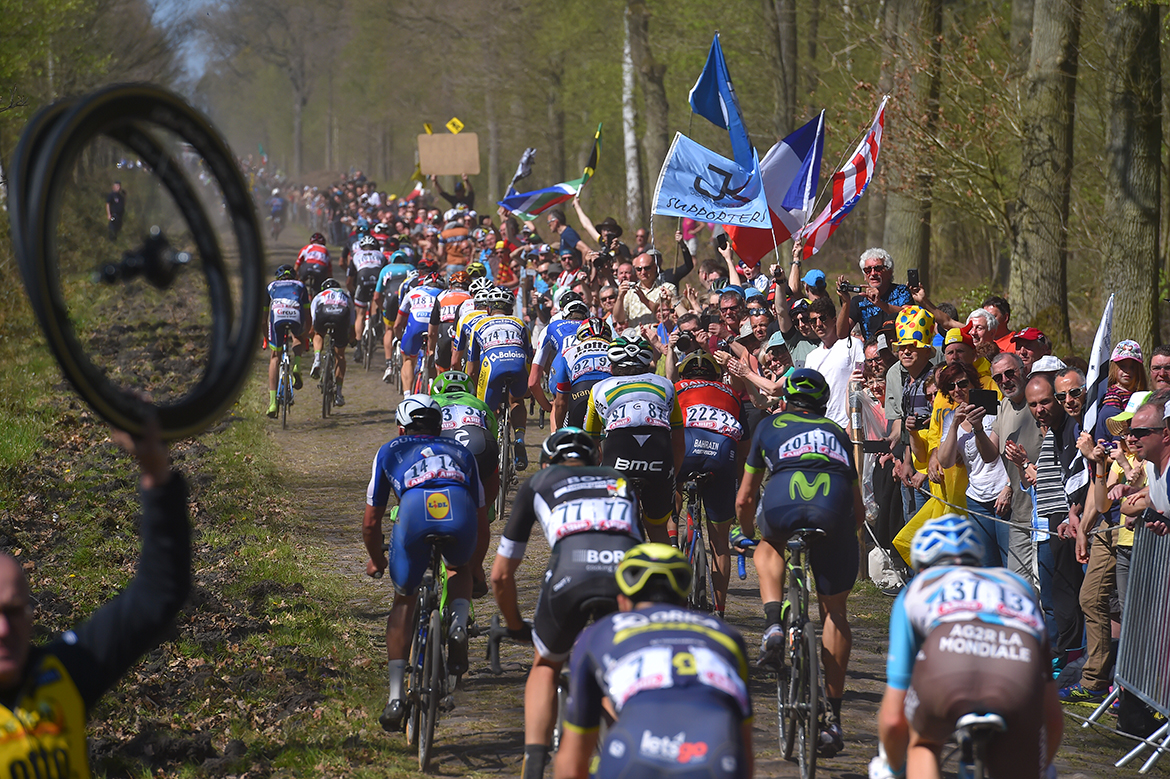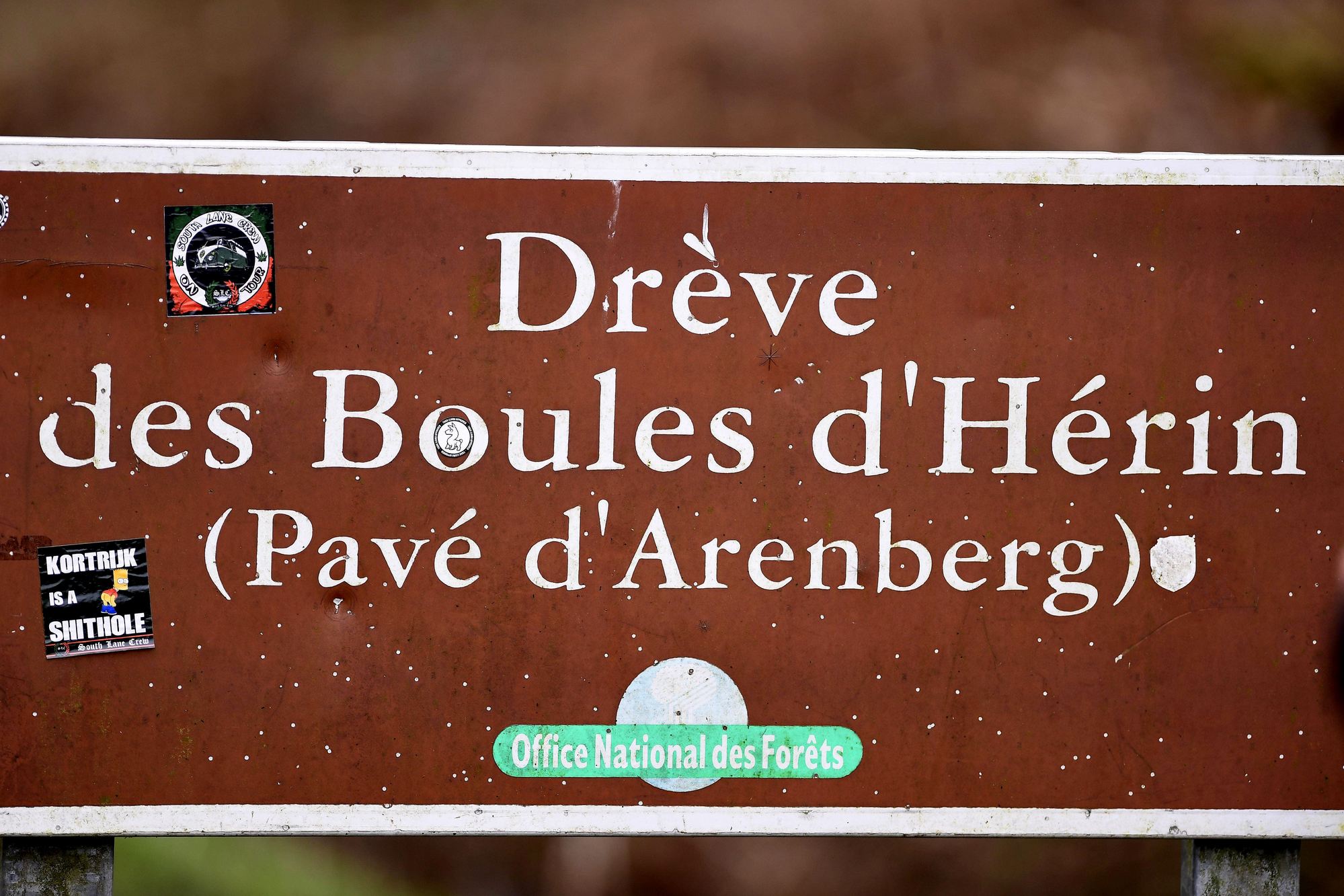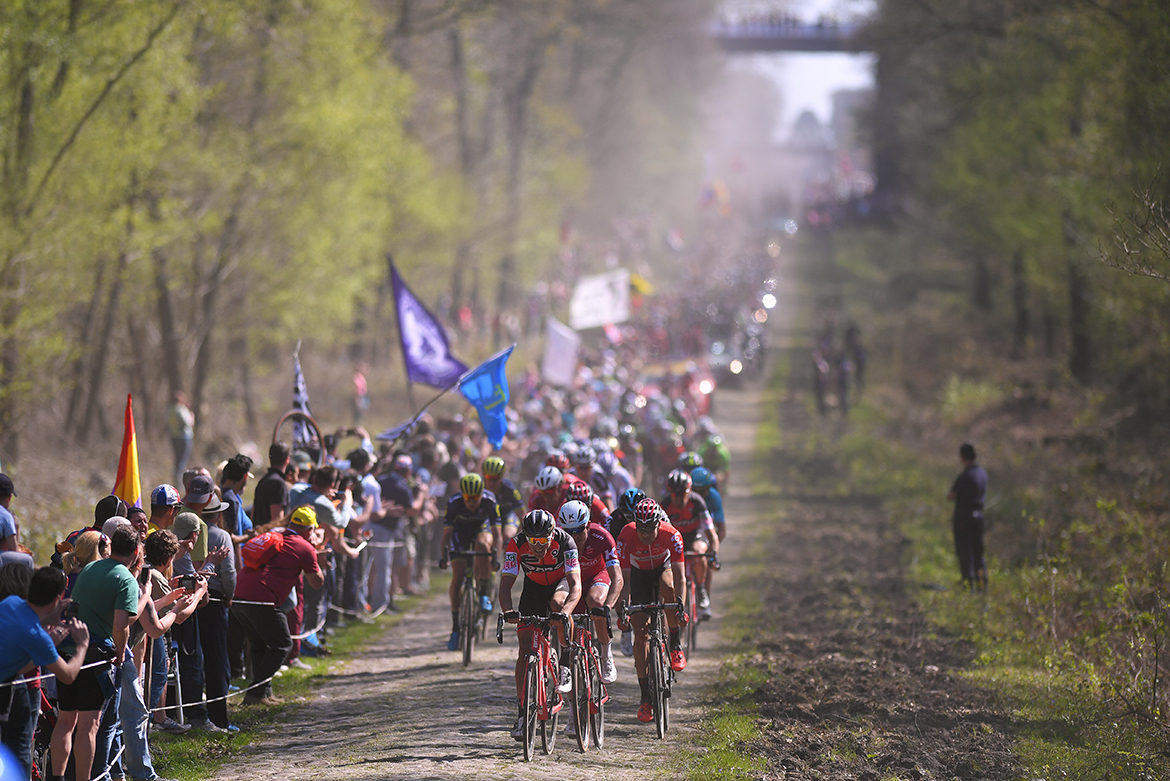Arenberg sector of Paris-Roubaix cobbles set to be made safer
Concerns about the stones could lead to mortar being added in gaps





The infamous Trouée d'Arenberg sector of pavé, used each year by Paris-Roubaix, could have the gaps between its cobbles filled in with mortar ahead of the 2019 race.
Rather than being an early April Fool's joke, French newspaper La Voix du Nord reports that concerns about the grass that grows in between the cobblestones is prompting the race organisers to look at solutions to make the road safer.
While the last truly wet Paris-Roubaix was back in 2002, concerns about the additional risk of wet grass overlapping the already treacherous pavé have led organiser ASO and Les Amis de Paris-Roubaix – a volunteer group that helps to repair and protect the iconic roads used by the race – to address the potential dangers.
As chemical sprays are not permitted in the Arenberg Forest, through which the cobbled road runs, thermal weedkillers have been used in the past to control the growth of grass between the pavé, but now ASO and its race director Christian Prudhomme are looking for a more permanent solution, according to the newspaper.
"If we don't change anything, then the next time it rains during the race, there are going to be a lot more crashes," president of Les Amis de Paris-Roubaix, François Soulcier, told La Voix du Nord.
The 2.4km-long stretch of cobbles through the forest, which made its first appearance in the race in 1968, has come and gone from the race over the years amid safety concerns, having been responsible for a number of horror crashes. Most well known in more recent years are those of Johan Museeuw in 1998, when the Belgian broke his kneecap, and was close to having to have his leg amputated in the aftermath after it became infected, and Philippe Gaumont in 2001, when the Frenchman broke his femur.
High-pressure washers will force the grass out from the gaps between the stones before mortar is applied to minimise the chance of the grass returning.
The latest race content, interviews, features, reviews and expert buying guides, direct to your inbox!
"The grass between the cobbles has become more and more dangerous," said Daniel Accou, another member of Les Amis de Paris-Roubaix. "As we can't use chemicals, we needed to come up with a different solution.
"We've started to test out different mortar joints," he continued, and said that work could begin in early December, when initially the first 800 metres of the road – considered the most dangerous, where the peloton hits the cobbles at around 60kph – would have mortar added to fill the gaps.
"It won't mean that the sector will be less difficult," Amis president Soulcier insisted, hoping to allay the fears of fans. "We're not trying to change the character of the most iconic part of the race."
Indeed, the famous cobbles will of course remain, maintained, as ever, by Les Amis, while Soulcier and his band of volunteers will now work on finding the most suitable mortar, which La Voix du Nord reports could be a dark colour, in tribute to the coal-mining industry that used to dominate this area of northern France.
Cyclingnews is the world's leader in English-language coverage of professional cycling. Started in 1995 by University of Newcastle professor Bill Mitchell, the site was one of the first to provide breaking news and results over the internet in English. The site was purchased by Knapp Communications in 1999, and owner Gerard Knapp built it into the definitive voice of pro cycling. Since then, major publishing house Future PLC has owned the site and expanded it to include top features, news, results, photos and tech reporting. The site continues to be the most comprehensive and authoritative English voice in professional cycling.
